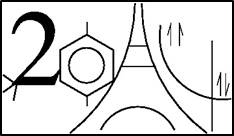The fuel claddings of pressurized water nuclear reactors (PWR) are made of zirconium alloy (mainly composed of 98% of Zr). In water, their oxidation reaction leads to the formation of an external zirconia layer (ZrO2). Both Zr and ZrO2 contain many activation products including 14C. The objective of this study is to identify and to characterize the possible carbon retention performances of Zr and monoclinic ZrO2.
This work was done by the way of a multi-scale approach. In the first step, Density Functional Theory (DFT), based on static simulations with the VASP code, was performed for C in zirconium bulk. It was found that a carbon atom always prefers to be in an interstitial position whether or not there is any vacancy. Two possible interstitial sites were pointed out. Second, the study of the carbon diffusion by interstitial mechanism with Kinetic Monte Carlo approach was performed. It was obtained that at the actual storage temperature, C is difficult to diffuse in Zr bulk so to exit from it.
The same work was also performed for C in monoclinic zirconia. It was found that when there was an atomic vacancy (O or Zr), the inserted carbon always preferred to go to the vacancy site than to be in an interstitial one. In the perfect ZrO2 bulk eight interstitial sites were identified. The preliminary result of carbon diffusion coefficient in the monoclinic zirconia showed that at the storage temperature, it was also very difficult for C to diffuse.
This work joins within the framework of several follow-up studies realized in collaborations with EDF, AREVA, and the NEEDS program.
- Autre

 PDF version
PDF version

